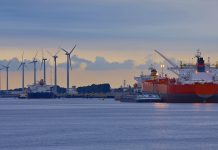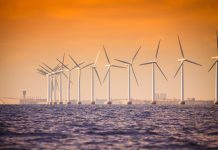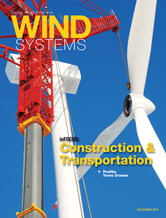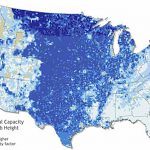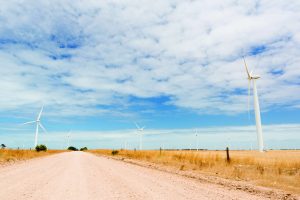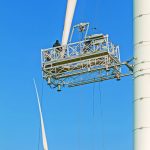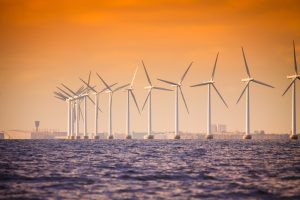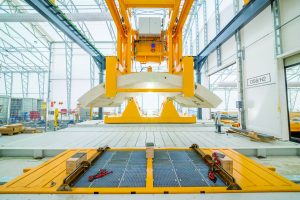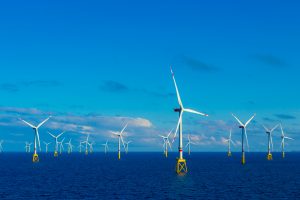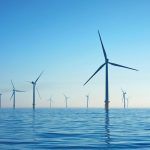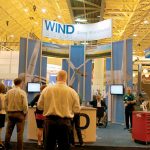Without gazing into an actual crystal ball, it can be tough to see exactly which way the breeze may be blowing for the wind industry for the coming year.
But by using 2016 as a barometer, it is possible to make an educated guess on where the industry is headed in 2017.
The biggest catalyst for wind was the renewal of the Production Tax Credit (PTC) in January.
“The PTC extension that we received provided a really great multi-year plan with some visibility out to 2019,” said Duncan McIntyre, president of Altenex, an Edison Energy Company. Altenex helps commercial, industrial, and institutional energy users purchase renewable energy. “It allows developers in the whole industry to plan around the incentives and make sure the projects are completed appropriately.”
And that was important, because at the end of 2015, the industry was caught in a whirlwind, according to McIntyre.
“There was a scramble to complete projects before the PTC expired,” he said. “There were developers raising capital for physical construction, but as a result of that PTC cycle, the quantity of high quality projects that were available for immediate transaction actually dwindled by the end of (2015). Any project that was in a too-early stage of development was abandoned because people didn’t want to spend money to develop it if they couldn’t get it built in that cycle.”
Because of that rush, when the PTC was extended in January, wind projects were scarce. The current PTC expires Dec. 31, 2019.
Rebuilding Year
“I think 2016 was a rebuilding year for the industry in terms of quality development assets,” McIntyre said.
The industry has been playing a bit of catch-up in 2016, but the business case for investing in wind has never been stronger, he said.
“There’s a business case associated with every corporate buyer,” McIntyre said. “Sometimes that business case is they want to put a major stake in the ground around sustainability or climate-change leadership, so this is a way to do that. In some other instances, it’s more purely financial. Companies want to save money, and they want to manage their risk. Renewable energy is a tool to accomplish financial, risk, and sustainability objectives.”
McIntyre predicts the areas that will see the most activity in the coming year will be deregulated markets at the retail level.
“Texas is a great example of a market that’s very open,” he said. “The business case is strong. And it’s strong because businesses can demonstrate that they’re able to save money. The sustainability leadership is strong.”
McIntyre also expects to see more activity with PJM Interconnection, a regional transmission organization that coordinates the movement of wholesale electricity in Delaware, Illinois, Indiana, Kentucky, Maryland, Michigan, New Jersey, North Carolina, Ohio, Pennsylvania, Tennessee, Virginia, West Virginia, and the District of Columbia.
“PJM is another example of a market where there’s been less corporate activity historically,” he said. “We believe there will be more. When we look at 2017, I think it will be a big year for corporate PPAs in the PJM market, and there’s a fairly open wholesale market. There are plenty of pockets of deregulated retail supply — Ohio, parts of Illinois — so the market systems are there, and the business case is strong in certain places. Those are the areas where we will see the most activity.”
And the perception that the U.S. lags behind wind production in other countries couldn’t be further from the truth, according to McIntyre.
Maybe that was true 10 years ago, but a lot has changed since then.
“I would say we’re a pretty serious player, if you look at the last five years,” McIntyre said. “If you look at the number of gigawatts we’re bringing online per year or per quarter, I would say we’re a pretty meaningful market.”
Corridor Saturation
Something on everyone’s radar is the risk of saturating traditional wind corridors in the U.S.
“I don’t think anyone knows the answer to that question as to what the appropriate level of wind penetration is that can still allow the system to balance appropriately,” McIntyre said.
But he said an increase in natural gas facilities has helped support an increase in areas ripe for wind penetration.
“Gas plants have a degree of flexibility that didn’t exist with nuclear plants or certain coal plants, so I think we’re improving the potential for renewables penetration,” McIntyre said.
As far as traditional windy markets becoming unavailable, he said he doesn’t see that happening anytime soon.
Technology Advances
And part of that reason is the industry is constantly improving wind-turbine technology.
“You don’t need the strongest wind resource available anymore to make a compelling argument for renewable energy,” McIntyre said.
A continuing trend for larger turbines, taller towers, and bigger blades is driving that technology need.
“And manufacturers are very much meeting that need,” he said. “They’re developing the products and what’s interesting to me is that some of that technology is developed for reasons you would not expect, or it’s benefiting the industry in ways you would not expect.”
McIntyre gave Ohio as an example. The state recently changed its setback rules. Those rules dictate how far away a turbine can be placed near a property line.
As a result, fewer turbines are allowed in a certain area. With taller, bigger turbines, more power can be produced with fewer assets.
One area many in the industry are watching is whether President Barack Obama’s environmental policies will be allowed to take stronger actions against carbon emissions.
“There are some open questions,” McIntyre said. “The Clean Power Plan is making its way through the system. And there are more and more discussions around using market mechanisms like a price on carbon. And while some of the policy questions get sorted out, the commercial and industrial market continues to adopt and benefit from renewables offtake.”
Deregulation
But beyond technology, beyond EPA restrictions, McIntyre said the biggest positive move for the industry going into 2017 would be more deregulation.
“We think that the industry could grow faster and be more meaningful as a contributor if users had more control,” he said. “Look at a market like Texas — deregulated wholesale and deregulated retail. That’s a great structure because the end user, let’s say it’s a corporation, chooses to buy power from a local retailer, from a local utility in some cases, and they can also choose to buy directly from a big wind farm.”
The biggest inhibitor to growth occurs when regulations make it difficult to do anything other than buy from their retailer, according to McIntyre.
“Creating the open-market structure and then creating the commercial structures is an ongoing trend that I expect to see more of next year,” he said. “They allow for competition, and they allow for buyers and sellers to meet up, and that ultimately drives down costs. And so that’s the start.”
















